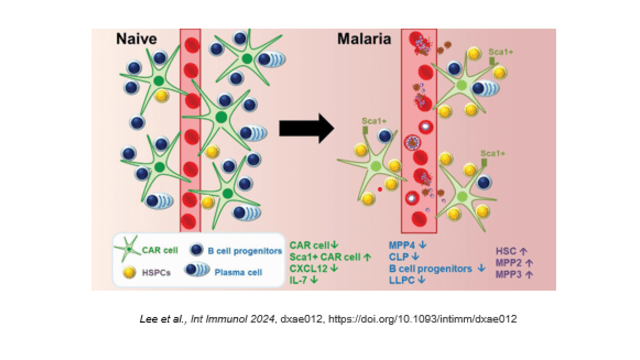Graphic
2024
2024.MyD88 in osteoclast and osteoblast lineages differentially controls bone remodeling in homeostasis and malaria.


2021-2022

A new method to visualize cerebral malaria
At November 2021 issue of International Immunology, Volume 33, Issue 11,
November 2021, Pages 587–594, https://doi.org/10.1093/intimm/dxab06.
Cerebral malaria (CM) is the major cause of death in Plasmodium falciparum-infected
humans. The mechanisms are not fully established although sequestration
of infected erythrocytes in microvessels is thought to play an important
role. In their Short Communication,Matsuo-Dapaah et al.construct 3-dimensionl images of single microvessels deep in the whole
brain using a new method—clear, unobstructed, brain/body imaging cocktails
and computational analysis (CUBIC) with light sheet fluorescent microscopy
(LSFM). They use this method in experimental cerebral malaria, in which
mice are infected with Plasmodium berghei ANKA. The parasites are shown
to preferentially accumulate in the capillaries and tissue of the olfactory
bulb (see figure) rather than other areas of the brain. If the bulk of
the olfactory bulb is removed, parasites are shown to accumulate in the
brainstem. This method should prove valuable for efforts to characterize
the interactions between infected erythrocytes and blood microvessels in
the brain and may even be applicable to post-mortem human tissue.

2020

2019


2018


2017
